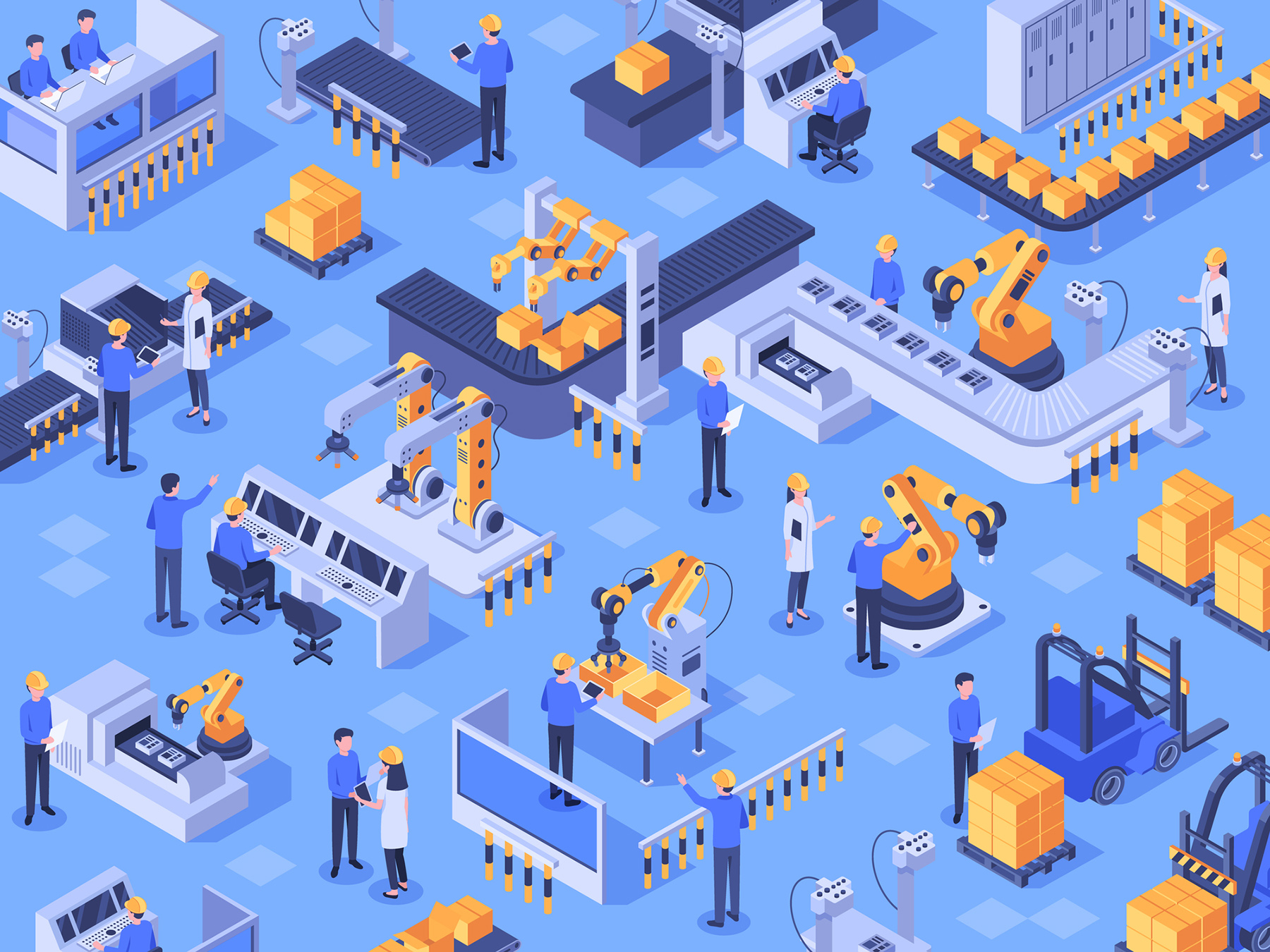Full Throttle: Making distribution faster than ever before
On-demand, real-time and without-delay products are what most of today’s consumers expect. This mentality is a key driver for distribution centers to meet the needs and demands of the consumer. To provide the best consumer experience, distribution companies are investing in advanced technologies to provide the efficiency, speed and low cost that consumers demand and expect.

Modern distribution technologies and management systems are essential for efficient shipping and delivery. Technologies include automation, robotics, artificial intelligence and sophisticated software systems, such as automated storage and retrieval system (AS/RS). Not only does technology improve efficiency and customer satisfaction, it’s become a necessary factor to counter the growing labor shortage especially as the logistics workforce ages and retires.

“Every day you read about the biggest companies in the world overhauling their supply chains,” says Fergal Glynn, vice president of marketing at 6 River Systems, a Boston-based manufacturer of collaborative mobile robots. “In reality, however, most companies cannot make the big investments like e-commerce giants can, yet everyone feels the pressure to transform and compete. Increasingly, it is the top supply chain leaders that realize fulfillment is the key to differentiation in the distribution market.”
Technology Transforms Distribution
Customers expect to receive their products quickly, with more delivery options, at minimal or low delivery costs. Speed and low costs create differentiation in the marketplace, which becomes more challenging for distributors as their customers create increasingly customized products that are equally difficult to deliver. “Add it all up and the sector is under acute and growing pressure to deliver a better service at an even-lower cost,” states Andrew Tipping, a strategist and consultant for Price Waterhouse Coopers and author of “Shifting Patterns: The Future of the Logistics Industry.”
Top technology trends in distribution include:
- Robotics. The speed and accuracy of robotics in picking, packaging and loading continue to evolve and help stressed supply chains achieve multichannel fulfillment and satisfy the needs of a growing customer base. Warehouse efficiency is optimized by integrating warehouse management and control systems that manage automated systems “such as pick-by-voice, conveyors, goods-to-person picking systems, inline scanners, scales and printers, and perhaps even automated vehicles or warehouse robots,” according to the Logistics Bureau, a consulting firm that specializes in logistics and distribution. Adoption of automation-as-a-service also allows warehouses to automate without the up-front investment in expensive equipment.
- Distribution nodes. Demand for fast, low-cost shipping and delivery is forcing distributors to set up smaller fulfillment centers that are geographically closer to customer bases. With the trend toward “just in time” delivery, distributors rely on distributed inventory flow forecasting to manage local inventories. These distribution nodes must fit into smaller spaces in urban areas and rely on automation and robotics to maximize efficiency. “They’ve already filled out their big hubs, the one-million square footers,” says Gillam Campbell, an industrial research manager at Jones Lang LaSalle. “Now they’re filling in their spokes to get that very fast delivery time in densely populated cities and urban areas.”
- Blockchain. Blockchain is a heavily encrypted, decentralized, electronic ledger that records all transactions related to a defined process. Originally designed for the financial industry, blockchain also has applications for streamlining supply chain and distribution processes, as well as protecting products during shipping and delivery. Blockchain in Transport Alliance is an organization that helps the transportation industry better understand how it can use blockchain to improve operations and service.
- Internet of Things (IoT). The Internet of Things and Industry 4.0 are all about connectivity and data. Robots, sensors, artificial intelligence, machine-to-machine communication and real-time data transmission and analytics provide accurate visibility into distribution and inventory. Radio frequency identification (RFID) tags, combined with GPS, can track shipments in real time. Mobile apps are used for inventory management, barcode scanning, fleet management, shipment tracking, order management and customer service.
- Transportation management systems. More companies are deploying transportation management systems (TMS) to manage logistics communications and processes, including route optimization, carrier management and distribution. “TMS applications have shifted from terminal-based installs to cloud-based platforms, reducing postponements in implementation, removing bottlenecks from downtime and refining cybersecurity simultaneously,” states Logistics Plus, a provider of transportation and warehousing solutions. “More companies will adopt such solutions to keep up with growing demand and integrate with other logistics technology trends.”
Moving Forward
Retailers and e-commerce companies will continue to offer expedited delivery services to differentiate themselves from the competition. As a result, distribution providers must continue to invest in technology solutions to meet the constant pressure to fulfill orders faster and with greater accuracy. Areas of interest include “last mile” facilities, drone deliveries and alternative fuel vehicles. Worker safety and cybersecurity are also top concerns.

“Innovations in logistics technology will continue to have a significant impact on the entire supply chain landscape, well into the future,” says Glynn. “Distributors who invest in new and effective warehouse capabilities will give themselves an edge in an ever-challenging environment.”
Some opinions expressed in this article may be those of a contributing author and not necessarily Gray.
Related News & Insights
Distribution, Construction
Consumer Demands Drive Process Improvements
GrayWay, Industry
Distribution, Construction
The New Face of Manufacturing: Amanda Hutchings with Peak Manufacturing
GrayWay, Industry
Distribution
How Reliant Is the U.S. on Global Supply Chains?
Industry
September 17, 2025